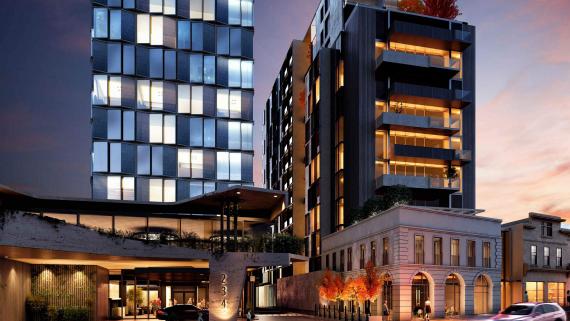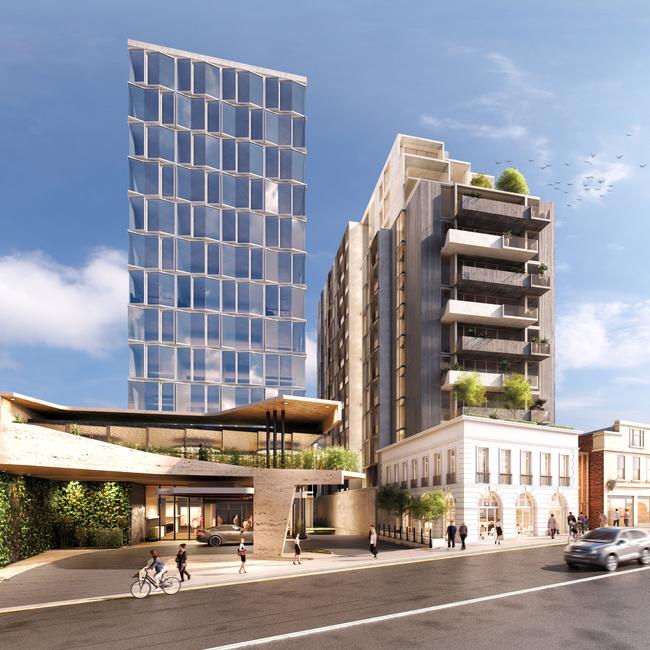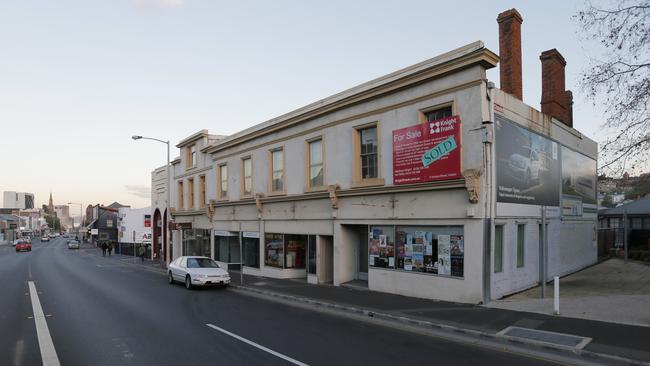Development application lodged for archaeological work at site of proposed hotel and apartments
The future of Fragrance Group’s planned twin tower development could hinge on the results of proposed archeological digs at the site.

Real estate
Don't miss out on the headlines from Real estate. Followed categories will be added to My News.
ARCHAEOLOGICAL investigations will need to be undertaken before work can resume at the site of a previously refused development in Hobart.
The application for an $80 million mixed-use development on Elizabeth St, proposed by the Singapore-based Fragrance Group, was refused by the Hobart City Council in December last year on height and heritage grounds.
The application has been going through mediation at the Resource Management and Planning Appeal Tribunal.
The proposed 12 and 13-storey twin towers in Hobart’s Mid-Town area would have 91 apartments, a 214-room hotel and underground parking for nearly 200 cars.
A new development application was lodged with the council in late May for archaeological works, which have now been publicly advertised.

The planning documents state the application would inform “the previous application for use and development of the site and any future development on the site to adequately respond to any significant archaeology heritage matters.”
The documents, prepared by historical archaeologist Brad Williams on behalf of Fragrance, propose to excavate four trenches to assess the site’s archaeological potential.
“The site is likely to have a high degree of archaeological potential that may contribute to our knowledge of a range of key heritage themes relating to early Tasmania, in particular the association with the notable character George Augustus Robinson,” Mr Williams’ report states. The report goes on to describe Mr Robinson, who was originally granted the Elizabeth St land in 1824, as “one of the most significant and most divisive figures in Australian history”.

The report states Mr Robinson was building a house on the site in 1828, which the following year was to be used as an “Aborigines asylum” for those who were mostly in transit to the Bruny Island “Aborigines Establishment”.
Forming part of the planning documents, a letter from Cultural Heritage Management Australia provides guidelines around any discovery of Aboriginal relics or features during the proposed archaeological works. Representations for or against the archaeological works proposal can be lodged with the council until July 31.


